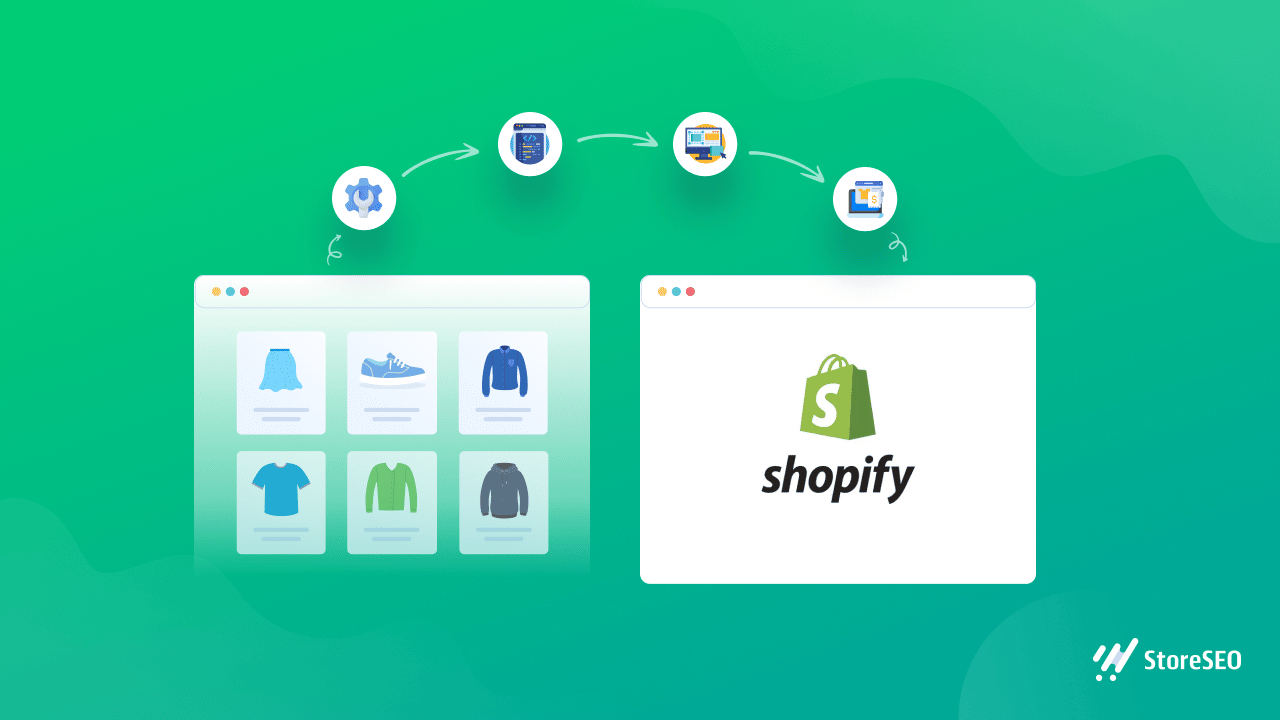Shopify 是最受欢迎的电子商务平台之一,因此人们经常迁移到 Shopify 以利用所有高级功能也就不足为奇了。如果您打算从当前的电子商务平台切换,请深入研究本教程,您将在其中了解如何 将您的在线商店迁移到 Shopify.

为什么要将您的商店迁移到 Shopify?
当谈到 创建您的电子商务商店,您有多种选择。但是,Shopify 是一个电子商务平台,具有大量功能,例如无限存储和带宽、安全的支付网关以及大量电子商务应用程序,可帮助您轻松开展业务。
如果您想知道是否应该将在线商店迁移到 Shopify,以下是一些原因 占电子商务市场份额的 11% 以上 属于 Shopify。
1. Shopify 为各类企业提供非常灵活的定价计划
在为您的电子商务商店选择合适的计划时,Shopify 有大量灵活的定价计划供您选择。无论您选择哪种计划,Shopify 的一大优点是您将获得无限的存储和带宽。相比之下,其他电子商务平台通常甚至对其更广泛的计划也施加限制。
2. 可在多个国家/地区使用的安全支付方式
Shopify 有自己的内置支付提供商,称为 Shopify 付款,简化了客户的整个购买流程。它甚至可以帮助您跟踪离线付款,并支持所有流行的付款方式,例如 Paypal 或 Amazon Pay。
3. Shopify 应用商店有超过 6000 个不同的在线业务应用程序
您可能希望将在线商店迁移到 Shopify 的另一个原因是,它支持与各种平台和解决方案的多种集成。事实上,Shopify App Store 拥有超过 6000 种不同的应用程序供您选择。
您可以查看一些 最好的 Shopify 应用在这里 了解他们能否帮助您启动成功的电子商务业务。
分步指南:如何将您的在线商店迁移到 Shopify?
现在您知道了为什么应该将在线商店迁移到 Shopify,让我们开始教程吧。下面,我们分享了一个简单的分步演练,您可以按照该演练迁移到 Shopify。
步骤 1:备份您的在线商店内容
在开始之前,请确保您已备份在线商店内容。根据您要迁移的电子商务平台,备份在线商店的过程会有所不同。如果您的在线商店是基于 WordPress 构建的,您可以查看此详细指南 如何备份你的网站.
步骤2:将你的商店内容导入Shopify
接下来,要迁移到 Shopify,您需要导入商店内容。您可以将所有产品导入为 CSV 文件格式,也可以使用 Shopify 应用商店中的 Shopify 迁移应用导入商店内容。以下是一些您可以使用的热门 Shopify 迁移应用:
LitExtension 商店迁移: 这款 Shopify 应用让您只需 3 个简单步骤即可轻松将内容从众多电子商务平台迁移到您的新 Shopify 商店。您可以导入产品数据、博客内容,甚至评论、客户订单等等。
矩阵化: 这是另一个流行的 Shopify 迁移应用程序,您可以使用它通过几个简单的步骤将您的在线商店迁移到 Shopify。它支持大多数最流行的电子商务平台,如 Magento、WooCommerce 和 BigCommerce。
除此之外, 矩阵化 还具有一些实用功能,例如创建商店备份、安排或启用导入和导出的自动重复以及将您的商店数据导出到 Google Shopping 等市场。
通用商店迁移应用程序: 这是最受好评的 Shopify 迁移应用程序之一,支持许多不同的电子商务平台,例如 Magento、BigCommerce、Wix、WooCommerce 等。
使用 CSV 文件或 Shopify 迁移应用将在线商店迁移到 Shopify 后,您需要检查导入是否成功。将在线商店迁移到 Shopify 后,请务必执行以下操作:
✅ 确保您的产品描述、图片和链接正常工作。
✅ 将您的产品整理成集合,以便于定期维护。
✅ 检查并调整新 Shopify 商店中的产品库存和转移。
步骤 3:管理您的域名、配送及其他详细信息
当您将在线商店迁移到 Shopify 时,您需要管理域名地址。在这种情况下,您有两种选择: 获取新域名 或者 转移域名 将您之前的商店迁移到新的 Shopify 网站。
如果您只想购买新域名,可以直接从 Shopify 购买。选择域名时,我们建议确保它是独一无二的,并能反映您的业务形象。您可以通过查看以下网站集思广益,为您的域名起草创意 企业名称生成器在这里.
另一方面,如果你想将域名转移到 Shopify,则需要将域名指向新的 Shopify 商店。你可以按照以下给出的步骤执行此操作 Shopify 自己的教程在这里.
配置域名后,您需要设置送货详情并配置税费。根据您经营业务的地点,税费和运费规则可能会有所不同。
完成这些步骤后,您就可以专注于设计 Shopify 商店,使其具有独特而吸引人的外观。为了帮助您入门,我们精心挑选了一些 最佳 Shopify 主题 你可以去看看。
步骤4:彻底测试你的Shopify商店和产品
当您对 Shopify 商店的整体外观和感觉感到满意,并检查所有产品和内容均已成功导入时,就可以彻底测试您的新 Shopify 商店了。
您可以运行测试订单,查看客户的购买流程是否功能齐全且精简,以增强他们的购物体验。您还可以检查退款和取消订单等特定交互是否正常运行。
步骤5:将链接重定向添加到您的新Shopify商店
当您的整个 Shopify 商店都经过彻底测试并且您确定没有更多问题需要解决时,您现在就可以开始在需要的地方将链接重定向添加到您的新 Shopify 商店。
这将有助于确保已将您之前的商店的某些页面或链接加入书签的客户可以自动重定向到您的新 Shopify 商店。
迁移到 Shopify 并轻松启动您的在线商店
正如你所见, 将您的在线商店迁移到 Shopify 只需 5 个简单步骤。但是,重要的是确保在迁移过程中正确导入了所有内容和链接,并且在开始向客户推广新商店之前也对其进行了彻底的测试。
喜欢这篇文章吗? 订阅我们的博客 了解更多有趣的教程、SEO 技巧和窍门以及 Shopify 指南,或加入我们的 Facebook 社区.









